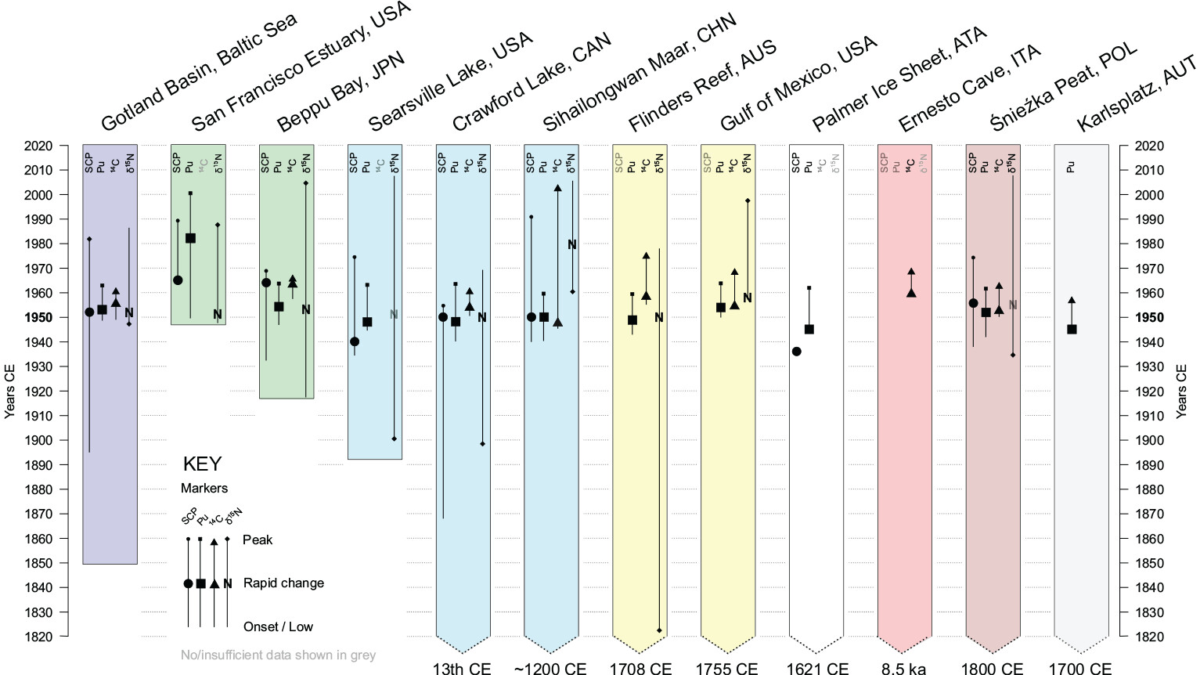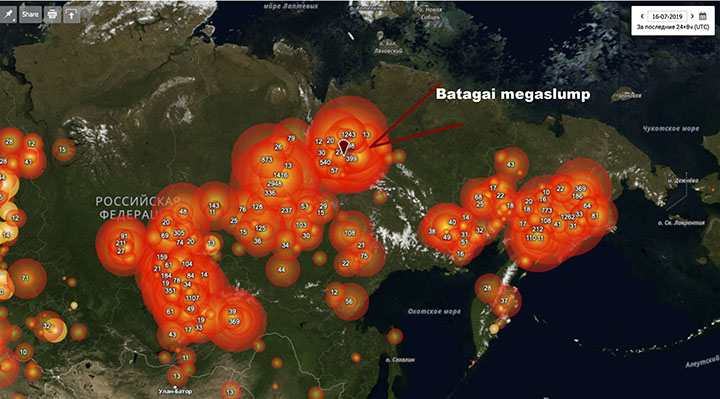Warming oceans have decimated marine parasites, and that’s not a good thing – “If this can happen unnoticed in an ecosystem as well studied as this one, where else might it be happening?”
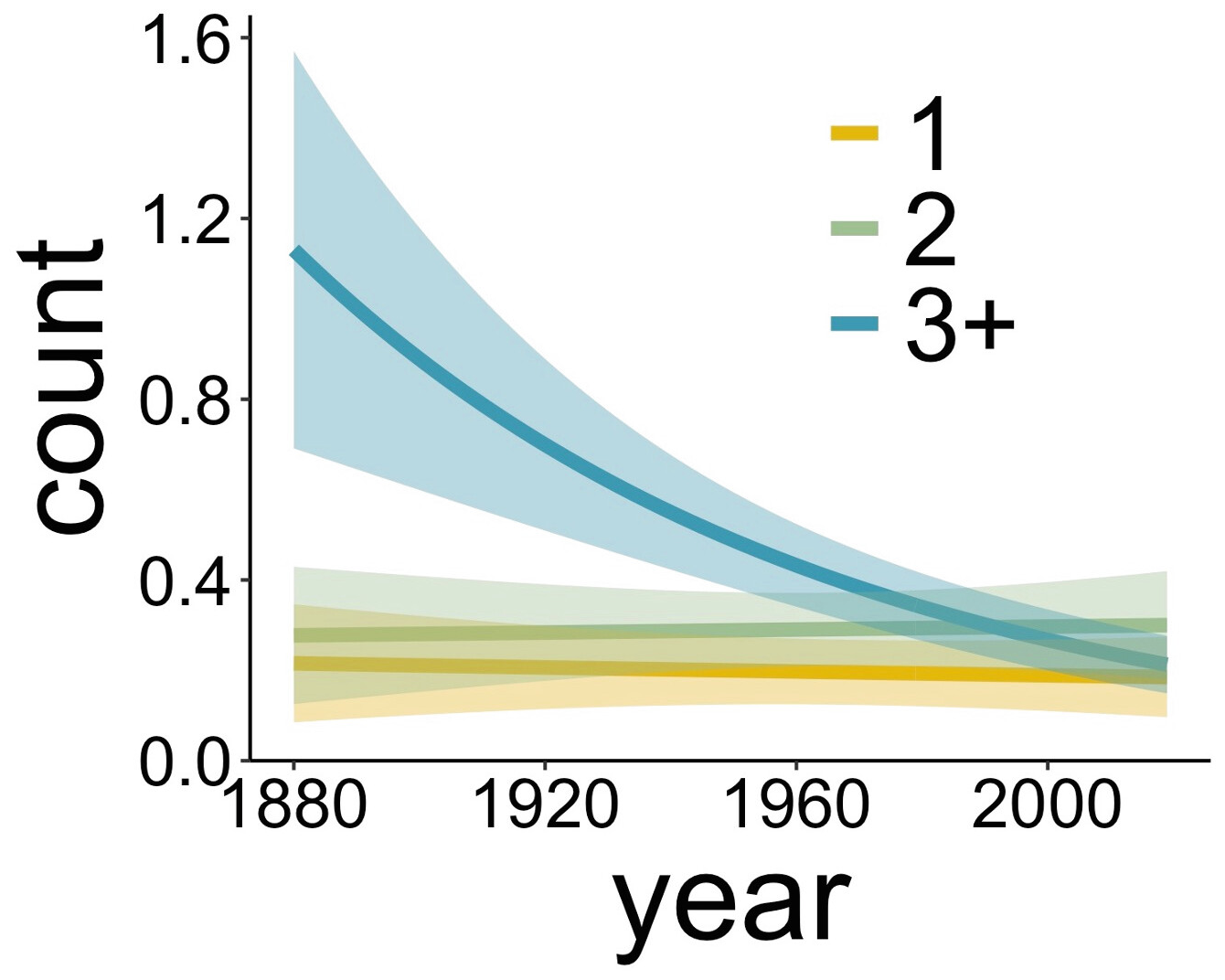
By Hannah Hickey
9 January 2023
(UW News) – More than a century of preserved fish specimens offer a rare glimpse into long-term trends in parasite populations. New research from the University of Washington shows that fish parasites plummeted from 1880 to 2019, a 140-year stretch when Puget Sound — their habitat and the second largest estuary in the mainland U.S. — warmed significantly.
The study, published the week of 9 January 2023 in the Proceedings of the National Academy of Sciences, is the world’s largest and longest dataset of wildlife parasite abundance. It suggests that parasites may be especially vulnerable to a changing climate.
“People generally think that climate change will cause parasites to thrive, that we will see an increase in parasite outbreaks as the world warms,” said lead author Chelsea Wood, a UW associate professor of aquatic and fishery sciences. “For some parasite species that may be true, but parasites depend on hosts, and that makes them particularly vulnerable in a changing world where the fate of hosts is being reshuffled.”
While some parasites have a single host species, many parasites travel between host species. Eggs are carried in one host species, the larvae emerge and infect another host and the adult may reach maturity in a third host before laying eggs.
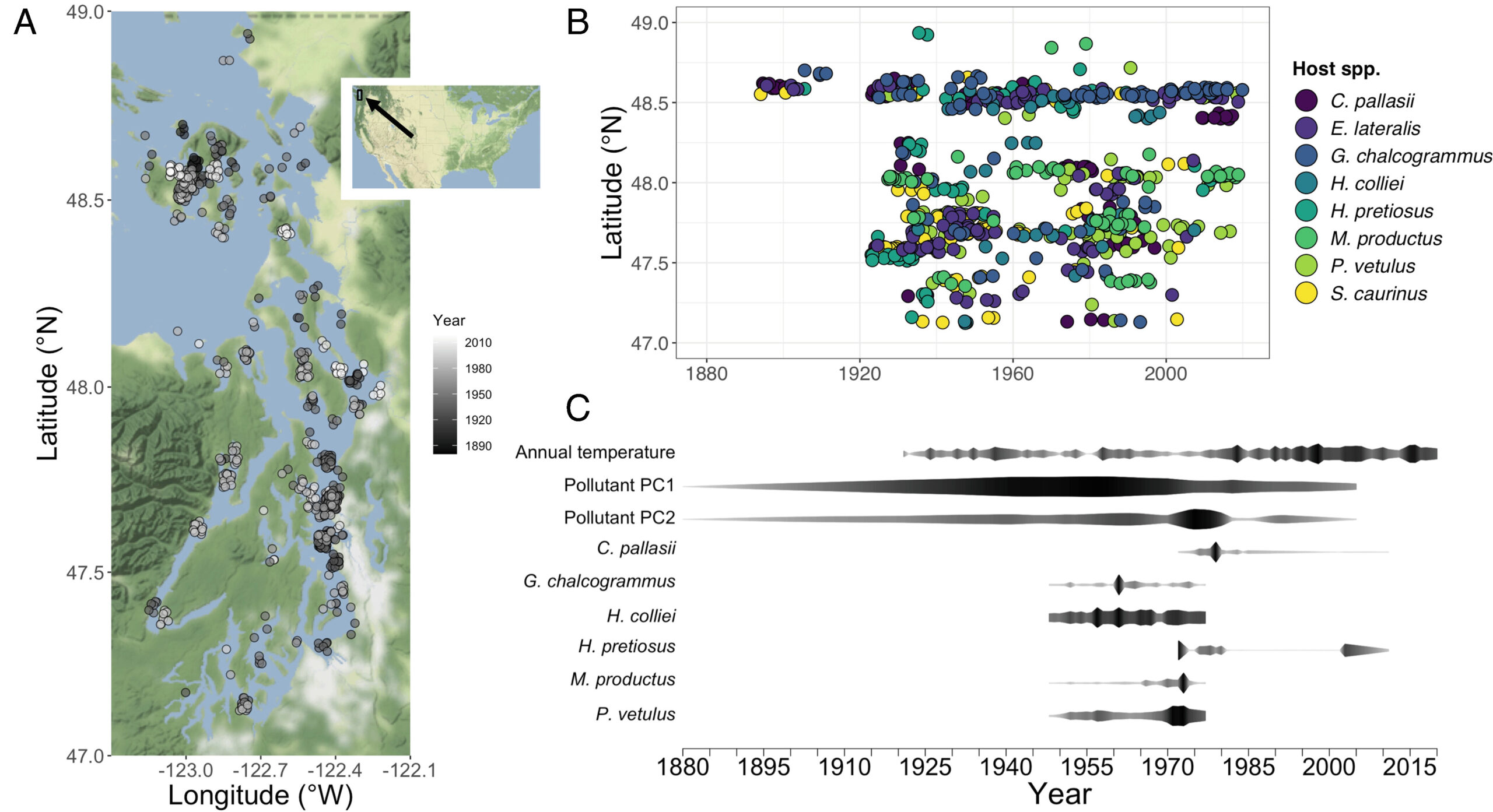
For parasites that rely on three or more host species during their lifecycle — including more than half the parasite species identified in the study’s Puget Sound fish — analysis of historic fish specimens showed an 11% average decline per decade in abundance. Of 10 parasite species that had disappeared completely by 1980, nine relied on three or more hosts.
“Our results show that parasites with one or two host species stayed pretty steady, but parasites with three or more hosts crashed,” Wood said. “The degree of decline was severe. It would trigger conservation action if it occurred in the types of species that people care about, like mammals or birds.”
And while parasites inspire fear or disgust — especially for people who associate them with illness in themselves, their kids or their pets — the result is worrying news for ecosystems, Wood said.
“Parasite ecology is really in its infancy, but what we do know is that these complex-lifecycle parasites probably play an important role in pushing energy through food webs and in supporting top apex predators,” Wood said. She is one of the authors of a 2020 report laying out a conservation plan for parasites.
Wood’s study is among the first to use a new method for resurrecting information on parasite populations of the past. Mammals and birds are preserved with taxidermy, which retains parasites only on skin, feathers or fur. But fish, reptile and amphibian specimens are preserved in fluid, which also preserves any parasites living inside the animal at the time of its death.
The study focused on eight species of fish that are common in the behind-the-scenes collections of natural history museums. Most came from the UW Fish Collection at the Burke Museum of Natural History and Culture. The authors carefully sliced into the preserved fish specimens and then identified and counted the parasites they discovered inside before returning the specimens to the museums.
“It took a long time. It’s certainly not for the faint of heart,” Wood said. “I’d love to stick these fish in a blender and use a genomic technique to detect their parasites’ DNA, but the fish were first preserved with a fluid that shreds DNA. So what we did was just regular old shoe-leather parasitology.”
Among the multi-celled parasites they found were arthropods, or animals with an exoskeleton, including crustaceans, as well as what Wood describes as “unbelievably gorgeous tapeworms:” the Trypanorhyncha, whose heads are armed with hook-covered tentacles. In total, the team counted 17,259 parasites, of 85 types, from 699 fish specimens.

To explain the parasite declines, the authors considered three possible causes: how abundant the host species was in Puget Sound; pollution levels; and temperature at the ocean’s surface. The variable that best explained the decline in parasites was sea surface temperature, which rose by 1 degree Celsius (1.8 degrees Fahrenheit) in Puget Sound from 1950 to 2019.
A parasite that requires multiple hosts is like a delicate Rube Goldberg machine, Wood said. The complex series of steps they face to complete their lifecycle makes them vulnerable to disruption at any point along the way.
“This study demonstrates that major parasite declines have happened in Puget Sound. If this can happen unnoticed in an ecosystem as well studied as this one, where else might it be happening?” Wood said. “I hope our work inspires other ecologists to think about their own focal ecosystems, identify the right museum specimens, and see whether these trends are unique to Puget Sound, or something that is occurring in other places as well.
“Our result draws attention to the fact that parasitic species might be in real danger,” Wood added. “And that could mean bad stuff for us — not just fewer worms, but less of the parasite-driven ecosystem services that we’ve come to depend on.”
The research was funded by the National Science Foundation, the UW-based Cooperative Institute for Climate, Ocean, and Ecosystem Studies, the Alfred P. Sloan Foundation, the University of Washington and the Washington Research Foundation.
Co-authors are Rachel Welicky at Pennsylvania’s Neumann University, who did this work as a UW postdoctoral researcher; Whitney Preisser at Georgia’s Kennesaw State University, who did this work as a UW postdoctoral researcher; Katie Leslie, a UW Research Technologist; Natalie Mastick, a UW doctoral student; Katherine Maslenikov, manager of the UW Fish Collection at the Burke Museum of Natural History and Culture; Luke Tornabene and Timothy Essington, faculty members in aquatic and fishery sciences at the UW; Correigh Greene at NOAA’s Northwest Fisheries Science Center; and John M. Kinsella at HelmWest Laboratory in Missoula, Montana.
Grants: NSF: 2141898
Contact
- Chelsea Wood at chelwood@uw.edu. Accompanying images and b-roll video available here.
Warming oceans have decimated marine parasites — but that’s not a good thing
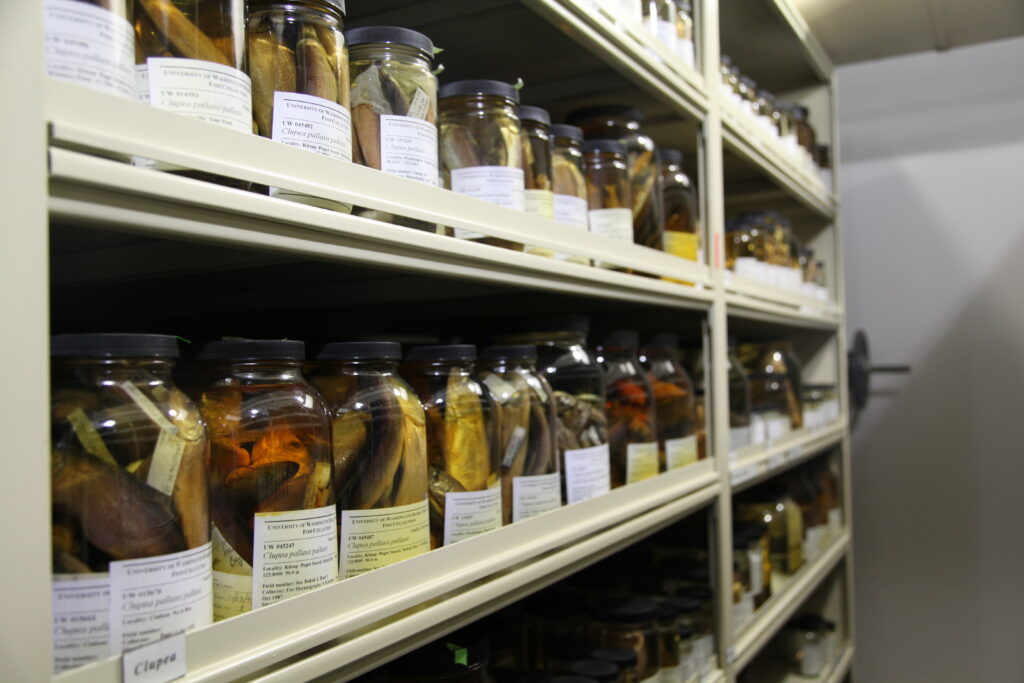
A reconstruction of parasite burden reveals one century of climate-associated parasite decline
ABSTRACT: Long-term data allow ecologists to assess trajectories of population abundance. Without this context, it is impossible to know whether a taxon is thriving or declining to extinction. For parasites of wildlife, there are few long-term data—a gap that creates an impediment to managing parasite biodiversity and infectious threats in a changing world. We produced a century-scale time series of metazoan parasite abundance and used it to test whether parasitism is changing in Puget Sound, United States, and, if so, why. We performed parasitological dissection of fluid-preserved specimens held in natural history collections for eight fish species collected between 1880 and 2019. We found that parasite taxa using three or more obligately required host species—a group that comprised 52% of the parasite taxa we detected—declined in abundance at a rate of 10.9% per decade, whereas no change in abundance was detected for parasites using one or two obligately required host species. We tested several potential mechanisms for the decline in 3+-host parasites and found that parasite abundance was negatively correlated with sea surface temperature, diminishing at a rate of 38% for every 1 °C increase. Although the temperature effect was strong, it did not explain all variability in parasite burden, suggesting that other factors may also have contributed to the long-term declines we observed. These data document one century of climate-associated parasite decline in Puget Sound—a massive loss of biodiversity, undetected until now.
SIGNIFICANCE: Parasites are influential in ecosystems, both for better (e.g., facilitating energy flow through food webs) and for worse (e.g., compromising the conservation status of host species). Unfortunately, there are few data to indicate how parasite populations are changing through time. We extracted data on metazoan parasite abundance from marine fish specimens held in natural history collections, finding one century of decline in abundance for some groups of parasites with complex life cycles. This decline was correlated with increases in sea surface temperature, suggesting a climate change-associated loss of parasite biodiversity. While a decline in parasitism might sound like a stroke of good luck, vital ecological functions could be lost alongside parasites.
A reconstruction of parasite burden reveals one century of climate-associated parasite decline
